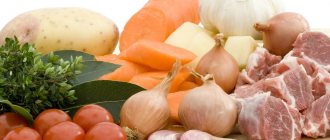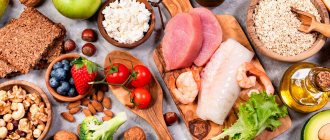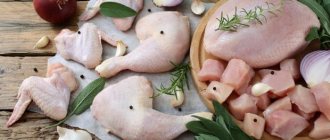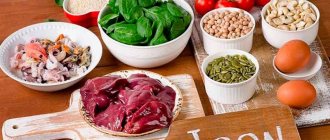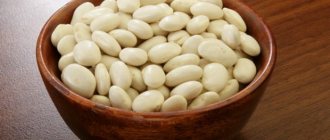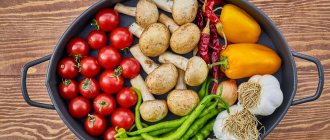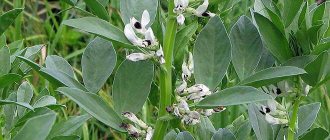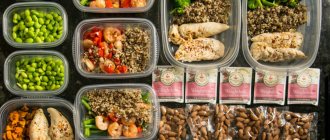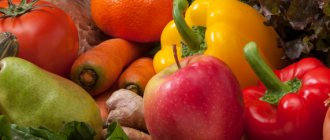What is fiber?
Fiber is a type of carbohydrate, but, unlike other substances in the group, it cannot be broken down into digestible glucose molecules.
Thus, the fiber passes through the entire digestive tract practically unchanged. However, fiber does a lot of work along the way. This substance is of great importance for proper digestion and weight correction, regulation of sugar and cholesterol levels in the blood. There is also an opinion that fiber is one of the factors that prevents the development of cancer. Some talk about it as a substance that prolongs the youth of the body.
Content:
- What is fiber?
- Daily norms
- Soluble fiber vs. insoluble fiber
- Benefits for humans
- Fiber and...
- Fiber in supplement form
- Diet rich in fiber
- Fiber-rich menu options
- When to cut back on fiber
- Excessive fiber consumption: benefits and harms
- How to take fiber correctly
Harm
Any supplement can be harmful if used incorrectly. When using fiber, it is important to consider the daily intake. If you exceed the recommended level, you may experience increased flatulence and bloating. Excessive fiber intake will interfere with the proper movement of food along the intestinal walls. This will not allow the body to absorb all the nutrients supplied with food.
Monitor your condition in the first days of using dietary supplements. If any alarming symptoms appear, stop using and consult your doctor.
Daily norms
Researchers say the average woman consumes about 13 grams of fiber daily, and men about 17 grams. Meanwhile, nutritionists have found that fiber is so important for humans that it should be present in the diet every day. At the same time, men under 50 years old should consume approximately 38 grams of fiber per day, older ones - about 30 grams. Women under 50 years of age are recommended to consume about 25 g of the substance daily, and 21 g per day is enough for women over 50. It is not difficult to provide yourself with these portions if your daily diet contains whole fruits and vegetables, nuts and seeds.
The required amount of fiber for children is determined taking into account age categories: children under 3 years old should receive 19 g of the substance per day, 4-8 years old - about 25 g per day, girls 9-18 years old - 26 g each, boys 9-13 years old – 31 g each, boys 14-18 years old – 38 g each.
Nutritionists say that the ratio of insoluble to soluble fiber should be 75% to 25%. But since many products (rolled oats, bran, flax seeds and others) contain two types of dietary fiber, you should not specifically calculate the proportions.
Fully or partially limited products
A fiber diet involves the complete exclusion from the diet of baked goods, sausages, animal and poultry meat, fatty fish, white rice, waffles, pasta, sugar, sweets (chocolate, cakes, cookies, jam, pastries, jam, candies, honey ).
Exclude cheeses, semolina, pickles, canned and smoked foods, fast food, dumplings, dumplings. It is not allowed to consume animal and cooking fats, as well as products based on them.
Canned fish, sauces, seasonings, spices, alcohol-containing and carbonated drinks, packaged juices, coffee are completely excluded.
Table of prohibited products
| Proteins, g | Fats, g | Carbohydrates, g | Calories, kcal | |
Berries | ||||
| grape | 0,6 | 0,2 | 16,8 | 65 |
Nuts and dried fruits | ||||
| nuts | 15,0 | 40,0 | 20,0 | 500 |
Snacks | ||||
| potato chips | 5,5 | 30,0 | 53,0 | 520 |
Cereals and porridges | ||||
| white boiled rice | 2,2 | 0,5 | 24,9 | 116 |
Flour and pasta | ||||
| pasta | 10,4 | 1,1 | 69,7 | 337 |
| vareniki | 7,6 | 2,3 | 18,7 | 155 |
| pancakes | 6,3 | 7,3 | 51,4 | 294 |
| dumplings | 11,9 | 12,4 | 29,0 | 275 |
Bakery products | ||||
| bagels | 16,0 | 1,0 | 70,0 | 336 |
| buns | 7,2 | 6,2 | 51,0 | 317 |
| buns | 7,9 | 9,4 | 55,5 | 339 |
| white bread crackers | 11,2 | 1,4 | 72,2 | 331 |
| wheat bread | 8,1 | 1,0 | 48,8 | 242 |
Confectionery | ||||
| jam | 0,3 | 0,2 | 63,0 | 263 |
| jam | 0,3 | 0,1 | 56,0 | 238 |
| candies | 4,3 | 19,8 | 67,5 | 453 |
| cookie | 7,5 | 11,8 | 74,9 | 417 |
Ice cream | ||||
| ice cream | 3,7 | 6,9 | 22,1 | 189 |
Cakes | ||||
| cake | 4,4 | 23,4 | 45,2 | 407 |
Chocolate | ||||
| chocolate | 5,4 | 35,3 | 56,5 | 544 |
Raw materials and seasonings | ||||
| mayonnaise | 2,4 | 67,0 | 3,9 | 627 |
| honey | 0,8 | 0,0 | 81,5 | 329 |
| sugar | 0,0 | 0,0 | 99,7 | 398 |
| tomato sauce | 1,7 | 7,8 | 4,5 | 80 |
| vinegar | 0,0 | 0,0 | 5,0 | 20 |
Dairy | ||||
| milk | 3,2 | 3,6 | 4,8 | 64 |
| cream 35% (fat) | 2,5 | 35,0 | 3,0 | 337 |
| sour cream 18% | 2,5 | 18,0 | 3,6 | 184 |
Cheeses and cottage cheese | ||||
| cheese | 24,1 | 29,5 | 0,3 | 363 |
| cottage cheese 18% (fat) | 14,0 | 18,0 | 2,8 | 232 |
Meat products | ||||
| fatty pork | 11,4 | 49,3 | 0,0 | 489 |
| salo | 2,4 | 89,0 | 0,0 | 797 |
| beef liver | 17,4 | 3,1 | 0,0 | 98 |
| bacon | 23,0 | 45,0 | 0,0 | 500 |
| ham | 22,6 | 20,9 | 0,0 | 279 |
Sausages | ||||
| boiled sausage | 13,7 | 22,8 | 0,0 | 260 |
| smoked sausage | 28,2 | 27,5 | 0,0 | 360 |
| pork sausages | 11,8 | 30,8 | 0,0 | 324 |
Bird | ||||
| smoked chicken | 27,5 | 8,2 | 0,0 | 184 |
| duck | 16,5 | 61,2 | 0,0 | 346 |
| goose | 16,1 | 33,3 | 0,0 | 364 |
Eggs | ||||
| hard-boiled chicken eggs | 12,9 | 11,6 | 0,8 | 160 |
Fish and seafood | ||||
| boiled fish | 17,3 | 5,0 | 0,0 | 116 |
| salted fish | 19,2 | 2,0 | 0,0 | 190 |
| salmon | 19,8 | 6,3 | 0,0 | 142 |
| canned fish | 17,5 | 2,0 | 0,0 | 88 |
| semi-finished fish products | 12,5 | 6,7 | 14,7 | 209 |
| sardine | 20,6 | 9,6 | — | 169 |
| salmon | 21,6 | 6,0 | — | 140 |
| tuna | 23,0 | 1,0 | — | 101 |
| trout | 19,2 | 2,1 | — | 97 |
| hake | 16,6 | 2,2 | 0,0 | 86 |
Oils and fats | ||||
| butter | 0,5 | 82,5 | 0,8 | 748 |
| animal fat | 0,0 | 99,7 | 0,0 | 897 |
Alcoholic drinks | ||||
| vodka | 0,0 | 0,0 | 0,1 | 235 |
| beer | 0,3 | 0,0 | 4,6 | 42 |
Non-alcoholic drinks | ||||
| cola | 0,0 | 0,0 | 10,4 | 42 |
| coffee | 0,2 | 0,0 | 0,3 | 2 |
| black tea | 20,0 | 5,1 | 6,9 | 152 |
| * data is per 100 g of product | ||||
Soluble fiber vs. insoluble fiber
Dietary fiber consists of non-starch polysaccharides such as cellulose, dextrins, inulin, lignin, chitin, pectins, beta-glucans, waxes and oligosaccharides.
There are two main types of fiber: soluble and insoluble.
Soluble fiber
Soluble fiber, as the name implies, dissolves in an aqueous environment, and when passing through the digestive tract, it can be fermented, after which it acquires a jelly-like consistency. It slows down the digestion process, resulting in a feeling of fullness that lasts longer. Thanks to this ability, it helps control appetite, and therefore weight.
Benefits of Soluble Fiber:
- reduces the level of “bad” cholesterol;
- regulates blood sugar concentration, which is important for diabetics and people with metabolic syndrome.
Products containing soluble fiber: fruit pulp, beans, peas, carrots, oats, flaxseeds. All these products dissolve in the body to a gel-like texture.
Insoluble fiber
Benefits of Insoluble Fiber:
- promotes proper intestinal motility and prevents constipation;
- accelerates the removal of toxins from the body through the colon;
- maintains optimal acidity levels in the intestines.
Insoluble fiber retains its shape throughout all stages of digestion. Accelerates the passage of food through the gastrointestinal tract and its elimination, which prevents constipation. Examples of insoluble fiber are hemicellulose, cellulose and lignin.
Foods rich in insoluble fiber: vegetables and fruits (peels), beans, greens, nuts, seeds.
Many foods contain both soluble and insoluble fiber. But their proportions vary. Meanwhile, substances from both categories have a beneficial effect on the functioning of the body.
Where can I buy?
Classic products today can be found in any pharmacy and on the shelves of most stores. But not all manufacturers produce high-quality apple fibers. In order not to encounter deception and buy exactly the right fiber, you need to order it from trusted suppliers.
The iHerb website presents dozens of manufacturers who produce products confirmed by quality certificates. You can always check the product’s compliance with international and European standards. In addition, the site offers a flexible system of discounts for new and regular customers.
Now Foods, Pure Apple Fiber, 340 g
See price on iHerb
The manufacturer produces a product that is a finely ground powder. Since the product is made from proven apples, it preserves their smell and taste. One serving contains 5 g of pure fiber.
The manufacturer recommends using it in the way that is most convenient. You can simply eat it with water, or you can dissolve it in your favorite drink. Another use option is to add the powder to smoothies, cereals, and dairy products. If you prefer to dissolve it in water, then keep the proportion of 1 teaspoon per 360 ml of liquid.
The composition contains no other components except dietary fiber. Dietary supplements are produced from apples of several popular varieties. During processing, potential allergens, hazardous components, and animal products are not used. Therefore, the product is safe to use and can be used by almost all groups of the population. This is a vegetarian supplement.
The dietary supplement is obtained from apple peels, which are pre-dried and then crushed to a powder. The content of soluble and insoluble fibers is 1 to 3. The product meets all current standards, which is confirmed by certification.
Use the products to get rid of disorders of the digestive tract and increase the content of beneficial microorganisms in the intestines. Thanks to regular use, you will cleanse your body of toxins, reduce sugar levels and dangerous cholesterol.
This remedy will satisfy hunger and help cope with the problem of excess weight. You will feel full for a long time, which will make you eat less. Junk food will be eliminated from the body faster without being stored in fat.
Benefits for humans
Regular consumption of fiber is very important for the health of the body. For example, it is known that consumption of soluble fiber protects against the development of cardiac diseases, in particular by reducing cholesterol concentrations. An insoluble substance reduces the risk of constipation, colitis, colon cancer, and hemorrhoids. Researchers say consuming fiber-rich foods reduces the risk of diverticulitis (small protrusions in the colon). You can also get rid of irritable bowel syndrome with the help of dietary fiber. People with diabetes who consume a lot of this substance tend to need less insulin. It has a beneficial effect on the functioning of the kidneys and gallbladder, in particular, it prevents the formation of stones in the organs.
Fiber and...
…cholesterol
Dietary fiber helps lower cholesterol levels. The process of digesting food requires bile acids, which are partly composed of sterol. To improve digestion, the liver pulls cholesterol from the blood to create bile acids, thereby reducing the concentration of so-called “bad” cholesterol.
…heart health
A link has also been found between fiber intake and the risk of heart attack. In people whose diet is based on foods rich in fiber, the risk of heart disease is reduced by 40%. And just increasing your daily fiber intake by 7 grams is enough to reduce your risk of heart attack by 7%.
…blood sugar
Research has shown a connection between fiber and blood glucose levels. American scientists have noticed that increased consumption of fiber can reduce glucose levels. In addition, the risk of developing diabetes is reduced in people who consume enough fiber daily. Soluble fiber helps slow the breakdown of carbohydrates and the absorption of glucose, which helps control blood sugar levels.
…cancer
Research conducted in 2011 showed a potential relationship between the amount of fiber consumed and the risk of cancer. Then a group of scientists conducted a control experiment on animals, and this time the researchers found that such a connection still exists, but only if the correct microflora is present in the intestines. In this case, the fiber reacts with bacteria in the lower part of the large intestine. Fermentation produces a reactant called butyrate. It is this substance that causes self-destruction of cancer cells.
But this is not the only type of cancer that is affected by fiber. Recently, scientists from Nebraska announced the results of another study. In their opinion, fiber, oddly enough, can also prevent lung cancer. The study found that 68 percent of those who consumed 18 grams or more of fiber per day had excellent lung health. Also, lovers of foods containing fiber turned out to be the best in another test - for lung capacity. Scientists do not yet know how to explain this relationship.
…longevity
According to many scientists, the secret of longevity lies in dietary fiber. And American epidemiologists believe that high-fiber foods can reduce mortality rates. And they add: wheat fiber and whole grain products are especially beneficial for humans. A 14-year follow-up showed that people whose diets included these foods had a 19 percent lower risk of death. By the way, some studies suggest that in ancient times the diet of our ancestors included at least 60 g of dietary fiber per day.
…allergy
In addition to all this, it is believed that fiber also plays a role in preventing food allergies. This theory again stems from the relationship between fiber and gut bacteria.
Scientists suggest that people with impaired intestinal microflora are prone to food allergies, in particular those caused by peanuts, crustaceans and shellfish. And dietary fiber activates the proliferation of the clostridia bacterium, on which the proper functioning of the organ actually depends.
List of foods with healthy fiber for people with food allergies: apples, pears, melon, carrots, potatoes, rutabaga, broccoli, green beans, pumpkin, zucchini. Their plant fiber is presented in high concentration and at the same time they are hypoallergenic products.
…asthma
A similar explanation applies to the effectiveness of fiber in treating asthma. One reason autoimmune diseases develop is that when digestion fails, particles from the intestines enter the bloodstream and cause inflammation. An experiment conducted on rats showed that increased consumption of dietary fiber reduces asthmatic inflammation.
...weight loss
Keeping you feeling full for a long time, fiber helps you lose weight. Therefore, all diets for obese individuals should contain the maximum amount of dietary fiber. The average daily intake of dietary fiber in this case should be about 60 g. In this case, you can resort to the use of pharmaceutical fiber. You can drink it yourself: dilute a tablespoon of the substance with a glass of water and drink 30 minutes before meals (but no more than 6 tablespoons per day). A more pleasant way is to add the substance to ready-made dishes (soups, broths, yoghurts, salads). There is a diet, the essence of which is to drink a liter of kefir and 6 tablespoons of fiber per day. This dietary menu can be used as a 1-day fast or followed for several days.
…healthy skin
The fiber contained in plantain helps eliminate bacteria and fungi from the body that cause acne and rashes. So, at least, some researchers say. There are many other reasons why you should consume enough of this substance. For example, most fiber foods contain high concentrations of vitamins and other nutrients needed to maintain healthy skin.
Reviews and results
Reviews among people who have practiced this diet vary significantly. Despite good tolerance and the absence of a pronounced feeling of hunger, the results differ for everyone and amount to 2-3 kg per week.
- “... I practiced this diet for 14 days. True, I started it in the winter before the New Year, and since vegetables and especially fruits are quite expensive during this period, I used fiber purchased at the pharmacy. I add 1.5-2 tablespoons of fiber to a serving of porridge or a glass of kefir 2 times a day. My health improved somewhat, but I lost only a little weight - 2.7 kg in two weeks”;
- “... I liked the diet because I really love vegetables and fruits and increasing their content in my diet was not difficult for me. At the same time, I removed all fatty, salty and smoked foods from my diet. I was on a diet for 1.5 months. The result is 5.8 kg.”
Fiber in supplement form
People who want to significantly increase the amount of fiber they consume resort to all sorts of dietary supplements. But nutritionists remind us that fiber from dietary supplements is not as beneficial as natural substances from food. Such supplements may be useful for people with digestive disorders, in particular for relieving constipation. Also, dietary supplements of this kind are useful for losing weight, lowering cholesterol and stabilizing blood sugar.
But when resorting to using fiber in the form of dietary supplements, you must be prepared for flatulence. In addition, the substance affects the bioactivity of some drugs, including aspirin.
Diet rich in fiber
A diet rich in fiber is very beneficial for health. But it is important to switch to a new nutrition program gradually, adding 5 g of the substance per day. A faster transition may cause bloating, cramping, and diarrhea. Also, nutritionists from the University of Michigan advise slightly reducing the amount of caffeine-containing drinks while taking fiber. Caffeine acts on the body as a diuretic, and fluid loss due to the consumption of large amounts of fiber is fraught with constipation.
Dietary fiber will help replenish your diet; you don’t have to immediately resort to taking dietary supplements. To do this, you should pay attention to fruits and berries. Ideally, they should be consumed in small portions throughout the day. The next recommendation from nutritionists is to start the day with oatmeal or bran with berries. As for protein foods, in addition to meat, it is important to include plant proteins (beans, beans, lentils) in your diet, which are also excellent sources of fiber. For a fiber-rich dinner, broccoli, collard greens, corn, whole grain pasta, and brown rice are ideal options.
How to use for weight loss
Despite all the benefits of high-fiber foods, over-consuming a fiber-based diet can negatively impact a person's health. The daily norm of cellulose is 30-40 grams. This can be fiber in food or dry fiber, which is sold in pharmacies. If you exceed the norm of dietary fiber, along with harmful substances, beneficial substances will also begin to be removed from the body. Increased gas formation and bloating will be added to this point.
American nutritionist Julia Upton from the Health Association has developed a number of simple rules that will help you navigate your daily fiber intake for weight loss and weight loss:
- 800 g of fresh vegetables and fruits with skin provide up to 20 g of dietary fiber every day.
- An additional 5-7 g will come from porridge made from barley, buckwheat, oatmeal, and brown rice.
- Another 5-6 g contain 100 g of whole grain bread.
- Introduce lentils, peas or beans into your diet twice a week.
- Do not use confectionery sugar, replace store-bought sweets with dried fruits.
- For small snacks, eat nuts and seeds (up to 40 g per day).
- Eat steamed bran (up to 6 tablespoons per day).
For good digestion of food and weight loss, fruits should be eaten in the first half of the day. Nutritionists recommend giving up the habit of drinking water. It is important to remember that a quarter of the daily menu should consist of salads, another quarter - fruits, the same amount - vegetables, fresh or cooked, a tenth - cereals and legumes, the same amount - milk, dairy products, nuts, a twentieth - vegetable fats.
Fiber-rich menu options
Breakfast:
- whole grain oatmeal;
- whole grains;
- pancakes made from wholemeal flour/buckwheat with fruits or berries;
- bran with fruit;
- a mixture of fiber-rich cereals;
- “rolled oatmeal” with apples, oranges, berries, bananas, almonds.
Lunch/dinner:
- wholemeal pasta;
- brown rice;
- bean dishes;
- Corn tortillas with eggs and cheese/with turkey/with cheese and vegetables;
- lentil dishes;
- baked potatoes with skin;
- cabbage dishes.
Dessert:
- wholemeal cookies and muffins;
- bran baked goods;
- yogurt with fruit and berry filling and cereals;
- apples with cinnamon;
- fruit salads.
Table of fiber content in foods
| Product (100 g) | Fiber (g) |
| Bran | 44 |
| Flax seeds | 27 |
| Mushrooms | 25 |
| Rose hips (berries) | 22 |
| Figs | 18 |
| Rye | 16 |
| Almond | 15 |
| Green pea | 12 |
| Whole wheat | 10 |
| Whole grain bread | 8,5 |
| Brazil nut | 7 |
| Chestnuts | 6,8 |
| Corn | 6 |
| Peas | 5,8 |
| Raspberries | 5 |
| Strawberries | 4 |
| Beans | 4 |
| Lentils | 3,8 |
| Dates | 3,5 |
| Bananas | 3,5 |
| Dried apricots | 3,2 |
| Raisin | 3 |
| Oatmeal | 2,8 |
| Currant | 2,5 |
| Parsnip, parsley | 2,4 |
| Gooseberry | 2 |
| Rhubarb | 1,8 |
| Orange | 1,5 |
| Olives | 1,5 |
| bell pepper | 1,4 |
| Pineapples | 1,2 |
| Pumpkin, carrots | 1,2 |
| Peaches, apricots | 0,9 |
| Cauliflower | 0,9 |
| Radish | 0,8 |
| Wheat porridge | 0,7 |
Best materials of the month
- Coronaviruses: SARS-CoV-2 (COVID-19)
- Antibiotics for the prevention and treatment of COVID-19: how effective are they?
- The most common "office" diseases
- Does vodka kill coronavirus?
- How to stay alive on our roads?
Authorized Products
A fiber diet includes soups based on vegetable broth with the addition of cereals, whole grain porridges cooked in water (buckwheat, pearl barley, barley, millet porridge).
Only brown, unpolished rice is allowed. Aromatic herbs (dill, parsley, basil, rosemary) and mild seasonings - paprika, allspice - are added to dishes.
The diet includes small quantities of chicken, rabbit, turkey, low-fat white fish, low-fat fermented milk products, low-fat cottage cheese, and chicken egg whites.
Both raw and cooked vegetables (cabbage, carrots, zucchini, eggplant, celery, beets, onions, garlic, radishes, asparagus, cucumbers, peppers, tomatoes) and various fruits (with the exception of grapes) should occupy a large share in the diet , bananas), which are recommended to be consumed with the skin.
It is necessary to include in the diet legumes, whole grain bread, bran, nuts, seeds, vegetable oils - flaxseed, olive, sesame, walnut oil. For drinks, it is recommended to use herbal and green teas, still mineral water, rosehip decoction, freshly prepared vegetable and fruit juices.
Table of permitted products
| Proteins, g | Fats, g | Carbohydrates, g | Calories, kcal | |
Vegetables and greens | ||||
| canned vegetables | 1,5 | 0,2 | 5,5 | 30 |
| eggplant | 1,2 | 0,1 | 4,5 | 24 |
| beans | 6,0 | 0,1 | 8,5 | 57 |
| swede | 1,2 | 0,1 | 7,7 | 37 |
| peas | 6,0 | 0,0 | 9,0 | 60 |
| green peas | 5,0 | 0,2 | 13,8 | 73 |
| zucchini | 0,6 | 0,3 | 4,6 | 24 |
| cabbage | 1,8 | 0,1 | 4,7 | 27 |
| boiled broccoli | 3,0 | 0,4 | 4,0 | 27 |
| kohlrabi cabbage | 2,8 | 0,0 | 10,7 | 42 |
| red cabbage | 0,8 | 0,0 | 7,6 | 24 |
| watercress | 2,3 | 0,1 | 1,3 | 11 |
| green onion | 1,3 | 0,0 | 4,6 | 19 |
| bulb onions | 1,4 | 0,0 | 10,4 | 41 |
| carrot | 1,3 | 0,1 | 6,9 | 32 |
| cucumbers | 0,8 | 0,1 | 2,8 | 15 |
| olives | 0,8 | 10,7 | 6,3 | 115 |
| salad pepper | 1,3 | 0,0 | 5,3 | 27 |
| radish | 1,2 | 0,1 | 3,4 | 19 |
| arugula | 2,6 | 0,7 | 2,1 | 25 |
| beet | 1,5 | 0,1 | 8,8 | 40 |
| celery | 0,9 | 0,1 | 2,1 | 12 |
| asparagus | 1,9 | 0,1 | 3,1 | 20 |
| tomatoes | 0,6 | 0,2 | 4,2 | 20 |
| dill | 2,5 | 0,5 | 6,3 | 38 |
| green beans | 2,0 | 0,2 | 3,6 | 24 |
| zucchini | 1,5 | 0,2 | 3,0 | 16 |
| garlic | 6,5 | 0,5 | 29,9 | 143 |
Fruits | ||||
| apples | 0,4 | 0,4 | 9,8 | 47 |
Nuts and dried fruits | ||||
| seeds | 22,6 | 49,4 | 4,1 | 567 |
Cereals and porridges | ||||
| buckwheat | 4,5 | 2,3 | 25,0 | 132 |
| oatmeal with water | 3,0 | 1,7 | 15,0 | 88 |
| pearl barley porridge on water | 3,1 | 0,4 | 22,2 | 109 |
| boiled brown rice | 2,6 | 0,9 | 22,8 | 110 |
| barley porridge on water | 2,3 | 0,3 | 15,7 | 76 |
Dairy | ||||
| dairy products | 3,2 | 6,5 | 4,1 | 117 |
| kefir 1% | 2,8 | 1,0 | 4,0 | 40 |
| fruit yogurt 1.5% | 3,7 | 1,5 | 8,9 | 63 |
Cheeses and cottage cheese | ||||
| cottage cheese | 17,2 | 5,0 | 1,8 | 121 |
Meat products | ||||
| rabbit | 21,0 | 8,0 | 0,0 | 156 |
Bird | ||||
| steamed chicken breast | 23,6 | 1,9 | 0,0 | 113 |
Fish and seafood | ||||
| boiled fish | 17,3 | 5,0 | 0,0 | 116 |
Oils and fats | ||||
| linseed oil | 0,0 | 99,8 | 0,0 | 898 |
| olive oil | 0,0 | 99,8 | 0,0 | 898 |
Non-alcoholic drinks | ||||
| mineral water | 0,0 | 0,0 | 0,0 | — |
| green tea | 0,0 | 0,0 | 0,0 | — |
Juices and compotes | ||||
| apricot compote | 0,5 | 0,0 | 21,0 | 85 |
| Pineapple juice | 0,3 | 0,1 | 11,4 | 48 |
| cucumber juice | 0,8 | 0,1 | 2,5 | 14 |
| rose hip juice | 0,1 | 0,0 | 17,6 | 70 |
| * data is per 100 g of product | ||||
When to cut back on fiber
Fiber can be beneficial and harmful. The latter occurs when you do not listen to the advice of doctors. Now, sometimes there are situations where people should stick to a low fiber diet, at least for a while. This usually applies to individuals undergoing chemotherapy, after radiation, or before/after surgery. In such cases, it is necessary to provide rest to the gastrointestinal tract. But people with Crohn's disease, inflammatory bowel disease, diverticulosis and ulcerative colitis will have to stick to a low-fiber diet for a longer period of time.
Chronic gastrointestinal diseases, diarrhea, flatulence, reflux, food allergies and intolerance to certain foods are reasons to reduce fiber intake.
The human body's digestive system is not designed to break down fiber. The undigested substance enters the intestines, where beneficial bacteria (probiotics) feed on the fiber and multiply in it. However, if pathogenic bacteria or fungi “settle” in the intestines, the fiber will serve as a breeding ground for these microorganisms, which, as you understand, will only aggravate the painful condition caused by pathogenic microflora. For this reason, it is better to avoid the fibrous substance until a healthy balance of intestinal bacteria is restored. This will allow, so to speak, to starve out microorganisms that are unusual for humans.
In such cases, legumes, whole grains, raw vegetables and fruits should be avoided. Also, do not abuse meat, caffeine, fried and spicy foods, and reduce portions of cocoa and nuts. Instead, it is better to focus on refined grains, cooked vegetables, ripe melons, peaches, plums, bananas and apricots.
Contraindications
Despite the benefits, there are also adverse reactions that occur during its use. In order to exclude adverse reactions, it is necessary to carefully familiarize yourself with the patient’s concomitant diseases, as well as the rules for its use.
The most common contraindications against which use is contraindicated include:
- Ulcerative and inflammatory processes of the stomach.
- Chronic and acute inflammation in the small and large intestines. Coarse dietary fiber will not only increase the motility of the inflamed intestine, but will also lead to injury to its vulnerable mucous membrane.
- Diarrhea of various origins.
- Signs of vitamin deficiency. Fiber, in addition to removing waste and toxins, removes beneficial substances from the body.
Excessive fiber consumption: benefits and harms
Fiber is one of the main nutrients for the body. By adhering to the recommended daily intake, you can achieve excellent results. But at the same time, consuming fiber in large quantities without following certain rules can cause unpleasant side effects. Research has shown that consuming too much fiber can increase the risk of diseases such as diverticulosis (intestinal protrusions). In addition, foods that are overly rich in fiber are harmful to a diseased intestine.
Consequences of excess:
- Imbalance of nutrients.
Are you eating a lot of fiber and neglecting other nutrients? Then be prepared for a shortage of useful elements. Many foods that contain fiber are high in carbohydrates and very low in protein and fat. Protein-containing meals and healthy lipids will help prevent imbalance. It is also important to know that dietary fiber interferes with the absorption of vitamin B2.
- Digestive discomfort.
Fiber is known as a substance that facilitates digestion. And it is true. But consuming extremely high doses can play a cruel joke and affect the body in the opposite way. Some of the consequences of consuming too much fibrous foods include abdominal cramps, diarrhea, bloating, and even intestinal blockage.
- Mineral deficiency.
It is believed that regularly consuming large portions of fiber interferes with the absorption of minerals such as iron, zinc, magnesium and calcium. This effect is caused by insoluble substances. Therefore, nutritionists recommend, in addition to taking fiber, drinking a lot of water and eating other foods rich in nutrients.
The dangers of deficiency and excess fiber
A lack of fiber in the diet increases the risk of developing pathological processes in the intestines and a number of chronic diseases:
- decreased integrity of the intestinal epithelium;
- a state of excessive appetite and constant feeling of hunger, which leads to weight gain;
- development of osteoarthritis of the knee joint;
- impaired intestinal motility, which leads to dysbiosis;
- decreased immunity;
- exacerbation of gastrointestinal diseases.
Fiber deficiency worsens the functioning of the gastrointestinal tract.
Excessive consumption of foods rich in plant fiber is no less dangerous.
Consequences of excess fiber:
- discomfort in the stomach and increased gas formation;
- bloating;
- diarrhea;
- imbalance of microelements and other beneficial substances.
Eating more than 60 grams of dietary fiber per day can cause intestinal blockage and cause dehydration.

